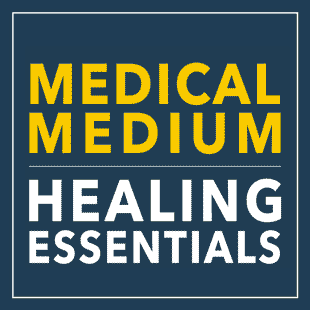Watch: Brain Inflammation (Encephalitis)

Brain Inflammation (Encephalitis)
Millions with chronic illness live with some level of undetected or undiagnosed brain inflammation. There are three main varieties of brain inflammation. The first is the easiest to identify, and it’s the one the medical establishment does tend to recognize: the result of injury. Whether you bang your head in an accident or experience head trauma, the brain can become inflamed on a short-term or longer-lasting basis, depending on the severity of the internal injury.
The second type of brain inflammation can seem more mysterious. Here, symptoms stick around past when the individual is expected to heal from a head injury. Brain inflammation persists, becoming chronic. This is a sign that a virus is present in the body or even the brain, and that the virus is taking advantage of the vulnerable state the brain is in. When an injury affects nerves by weakening them, nerves become more sensitive, exposing nerve root hairs, especially in the brain stem, and the nerves can be triggered easily from a virus creating neurotoxins, whether in the brain, near the brain, or somewhere else in the body.
The third type of brain inflammation is when a virus creates brain inflammation without an initial injury that becomes a trigger. In rare cases, viruses attach themselves to nerves close to or even inside the brain, including the brain stem. The viruses that do this are usually undiscovered varieties and mutations of herpetic viruses such as HHV-6, EBV, shingles, and herpes simplex 1 or 2, and normally there must be a lowered immune system and elevated toxic heavy metal load at the same time for a virus to be encouraged enough to make a home in the brain area. Direct viral infection of the brain will often lead to the brain becoming so inflamed that someone experiences an acute attack of encephalitis that leads to hospitalization for viral encephalitis.
In most cases, it’s a virus in another part of the body that remotely causes milder, mysterious, chronic brain inflammation. Many people live day to day with a chronic, low-grade viral load.
When a mutated strain of a virus such as EBV, shingles, or HHV-6 camps out in an organ or gland such as the liver, spleen, or thyroid, the virus will start releasing neurotoxins that travel throughout the body. If that virus is thriving, a large amount of neurotoxins will be released into the bloodstream, and from there, they can enter the brain and pollute it, creating a mild level of brain inflammation that is undetectable. This is the type of brain inflammation that people living with chronic illness so often experience undiagnosed.
Many people are sensitive to viral neurotoxins, allergic to them, developing tingles, numbness, headaches, dizziness, weakness in their arms and legs, abnormal sensitivity to heat or cold, difficulty handling a hot, humid day or being exposed to cold for too long, tiredness even after sleeping enough hours, fatigue, or even severe fatigue, which I call neurological fatigue (see “ME/CFS”). When these symptoms of viral neurotoxin–induced brain inflammation are debilitating, it’s usually a result of more than one herpetic virus sitting inside the liver or even spleen. For example, it could be two varieties of EBV, one or two varieties of shingles, herpes simplex 1 or 2, and HHV-6 all at once—along with a lowered immune system and lots of pesticides, herbicides, fungicides, chemical fragrances, eggs, dairy products, and gluten in the body systems, which all serve as viral fuel.
Toxic heavy metals usually have to be present, too, for someone to develop brain inflammation from a chronic viral infection elsewhere in the body. Toxic heavy metals create a specific variety of neurotoxin that’s particularly inflammatory for the central nervous system.
Find out more about brain inflammation and how to heal in Brain Saver and Brain Saver Protocols, Cleanses & Recipes.
This item posted: 05-Apr-2023
The information provided on this Site is for general informational purposes only, to include blog postings and any linked material. The information is not intended to be a substitute for professional health or medical advice or treatment, nor should it be relied upon for the diagnosis, prevention, or treatment of any health consideration. Consult with a licensed health care practitioner before altering or discontinuing any medications, treatment or care, or starting any diet, exercise or supplementation program. Neither Anthony William nor Anthony William, Inc. (AWI) is a licensed medical doctor or other formally licensed health care practitioner or provider. The content of this blog and any linked material does not necessarily reflect the opinions of Anthony William, AWI or the principal author, and is not guaranteed to be correct, complete, or up to date.
Thanks for printing this post. For more, visit www.medicalmedium.com


